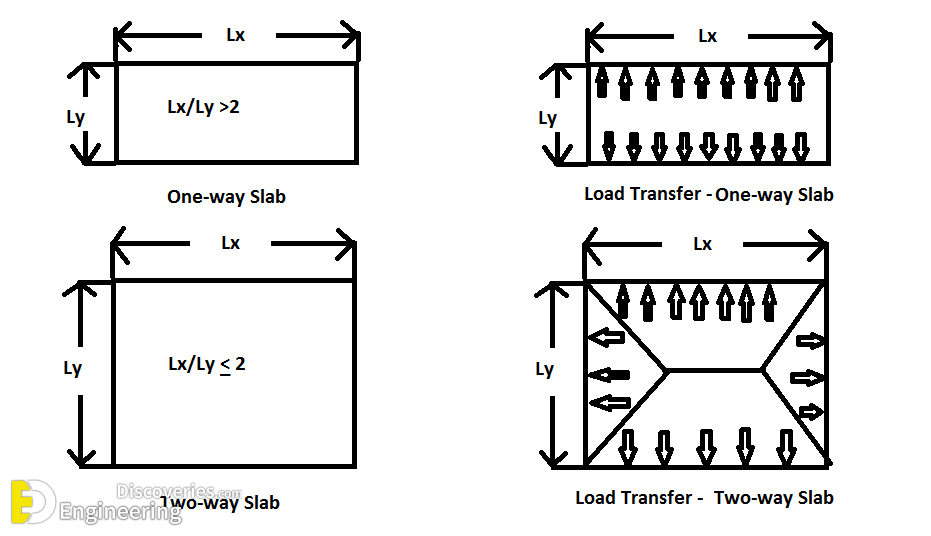Slabs are basically two-dimensional construction members, which can be provided to cover floors and transfer the loads further to beams or directly to columns. Slab can be constructed directly on columns or on beams which can divide the slab into two types or classes That’s why we can see these two terms about slabs One-way slab And two-way slab. So how do we differentiate one way and two-way slab?
Well! That’s simple. You have to just keep a few things in mind
1- A slab is one way when a slab is supported on two edges and bends in only one direction.
2- If the slab is supported on four edges and bends in two directions then that’s known by the two-way slab. However, sometimes it’s hard to decide whether the slab is one-way or two-way by looking into the supports or edges… That’s why we also have to consider the length breadth ratio into account.
3- If the length-to-breadth (L/B) ratio of the slab is equal to or greater than two. Then the slab may be considered as a one-way slab .
4- If the length to breadth (L/B) ratio of the slab is less than two then the slab may be called as a two-way slab.
5- A one-way slab is designed for the spanning direction alone; the main tension reinforcing bars of such a slab run parallel to the span. And For the transverse direction, a minimum amount of shrinkage reinforcement is provided.
6- In the case of two way slab the main reinforcement is designed for both directions.


